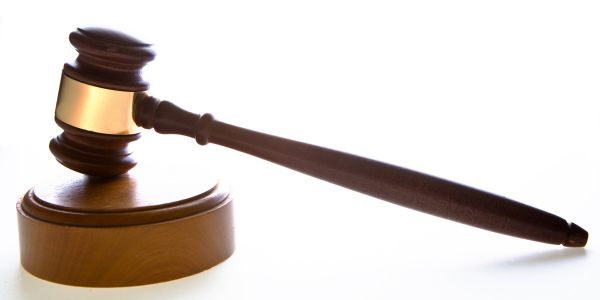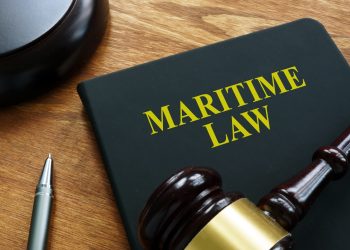Princess Cruise Lines Ltd., a subsidiary of Carnival Corporation, has agreed to plead guilty to seven felony charges stemming from its deliberate pollution of the seas and intentional acts to cover it up. Princess will pay a $40 million penalty– the largest-ever criminal penalty involving deliberate vessel pollution – and plead guilty to charges related to illegal dumping of oil contaminated waste from the Caribbean Princess cruise ship.
As part of the plea agreement with Princess, cruise ships from eight Carnival cruise line companies (Carnival Cruise Line, Holland America Line N.V., Seabourn Cruise Line Ltd. and AIDA Cruises) will be under a court supervised Environmental Compliance Program (ECP) for five years. The ECP will require independent audits by an outside entity and a court appointed monitor.
The charges to which Princess will plead guilty concern the Caribbean Princess cruise ship which visited various U.S. ports in Florida, Maine, Massachusetts, New Jersey, New York, Puerto Rico, Rhode Island, South Carolina, Texas, U.S. Virgin Islands and Virginia. The U.S. investigation was initiated after information was provided to the U.S. Coast Guard by the British Maritime and Coastguard Agency (MCA) indicating that a newly hired engineer on the Caribbean Princess reported that a so-called “magic pipe” had been used on Aug. 23, 2013, to illegally discharge oily waste off the coast of England. The whistleblowing engineer quit his position when the ship reached Southampton, England. The chief engineer and senior first engineer ordered a cover-up, including removal of the magic pipe and directing subordinates to lie. The MCA shared evidence with the U.S. Coast Guard, including before and after photos of the bypass used to make the discharge and showing its disappearance. The U.S. Coast Guard conducted an examination of the Caribbean Princess upon its arrival in New York City, New York, on Sept. 14, 2013, during which certain crew members continued to lie in accordance with orders they had received from Princess employees.
According to papers filed in court, the Caribbean Princess had been making illegal discharges through bypass equipment since 2005, one year after the ship began operations. The discharge on Aug. 26, 2013, involved approximately 4,227 gallons, 23 miles off the coast of England within the country’s Exclusive Economic Zone. At the same time as the discharge, engineers simultaneously ran clean seawater through the ship’s overboard equipment in order to create a false digital record for a legitimate discharge.
Caribbean Princess used multiple methods over the course of time to pollute the seas. Prior to the installation of the bypass pipe used to make the discharge off the coast of England, a different unauthorized valve was used. When the Department of Justice investigative team conducted a consensual boarding of the ship in Houston, Texas, on March 8, 2014, they found the valve that crew members had described. When it was removed by Princess at the department’s request, it was found to contain black oil.
The U.S. investigation uncovered two other illegal practices which were found to have taken place on the Caribbean Princess as well as four other Princess ships – Star Princess, Grand Princess, Coral Princess and Golden Princess. One practice was to open a salt water valve when bilge waste was being processed by the oily water separator and oil content monitor. The purpose was to prevent the oil content monitor from otherwise alarming and stopping the overboard discharge. This was done routinely on the Caribbean Princess in 2012 and 2013. The second practice involved discharges of oily bilge water originating from the overflow of graywater tanks into the machinery space bilges. This waste was pumped back into the graywater system rather than being processed as oily bilge waste. Neither of these practices were truthfully recorded in the oil record book as required. All of the bypassing took place through the graywater system which was discharged when the ship was more than four nautical miles from land. As a result, discharges within U.S. waters were likely.
In the factual statement, Princess also admitted to the following:
- Illegal discharges took place on the Caribbean Princess dating back to 2005, one year after the vessel started operations, as part of a conspiracy to violate the Act to Prevent Pollution from Ships and to obstruct justice.
- Different bypass methods were used over the course of time, including a “magic pipe” used to transfer oily waste overboard.
- After learning that an engineer had blown the whistle, senior ship engineers dismantled the bypass pipe and instructed crew members to lie.
- Prior to the MCA boarding, the chief engineer and senior first engineer ordered crew members to lie. Following the MCA’s inquiry, the chief engineer held a sham meeting in the engine control room to pretend to look into the allegations while holding up a sign stating: “LA is listening.” The engineers present understood that anything said might be heard by those at the company’s headquarters in Los Angeles, California, because the engine control room contained a recording device intended to monitor conversations in the event of an incident.
- When using the magic pipe, engineers processed sea water through the oily water separator in order to create a digital record to account for the missing waste.
- Shore-side management failed to provide and exercise sufficient supervision and management controls to prevent or detect criminal violations by Caribbean Princess crew members.
- A perceived motive for the crimes was financial – the chief engineer that ordered the dumping off the coast of England told subordinate engineers that it cost too much to properly offload the waste in port and that the shore-side superintendent who he reported to would not want to pay the expense.
- Princess engineers on the Caribbean Princess indicated that the chief engineer responsible for the discharge on Aug. 26, 2013, was known as “broccino corto” (a person with short arms), an Italian expression for a cheap person whose arms are too short to reach his wallet. Some expressed the same opinion of the shore-side superintendent.
- Graywater tanks overflowed into the bilges on a routine basis and were pumped back into the graywater system and then improperly discharged overboard when they were required to be treated as oil contaminated bilge waste. The overflows took place when internal floats in the graywater collection tanks got stuck due to large amounts of fat, grease and food particles from the galley that drained into the graywater system. Graywater tanks overflowed at least once a month and, at times, as frequently as once per week. Princess had no written procedures or training for how internal gray water spills were supposed to be cleaned up and the problem remained uncorrected for many years.
- Princess discovered “stub pipes” along the entire length of the ship for the apparent purpose of pumping graywater overflows into the bilges back into the graywater system and subsequently overboard.
- According to papers filed in court, Princess has undertaken remedial measures in response to the government’s investigation, including upgrading the oily water separators and oil content monitors on every ship in its fleet and instituting many new policies.
If approved by the court, $10 million of the $40 million criminal penalty will be devoted to community service projects to benefit the maritime environment; $3 million of the community service payments will go to environmental projects in South Florida; $1 million will be earmarked for projects to benefit the marine environment in United Kingdom waters.
Source: US Department of Justice






























































